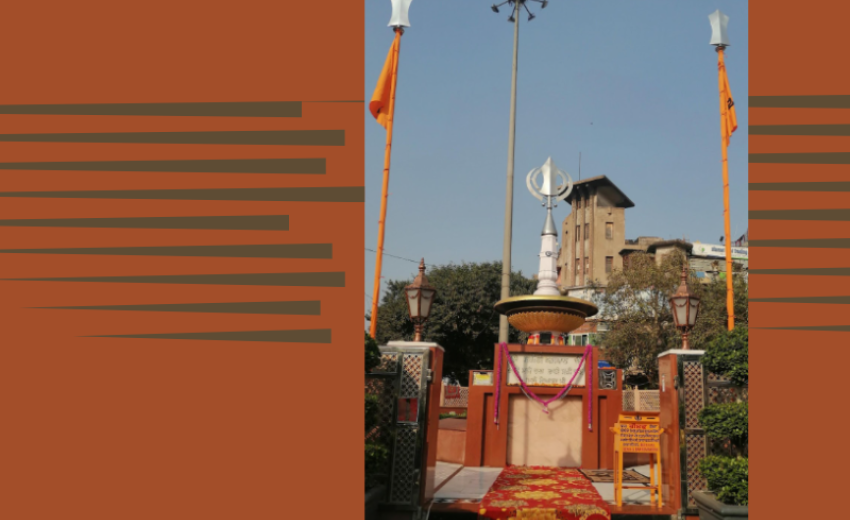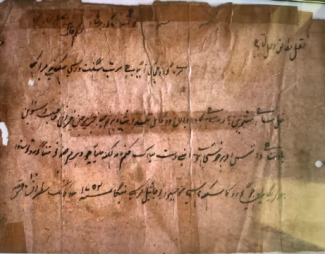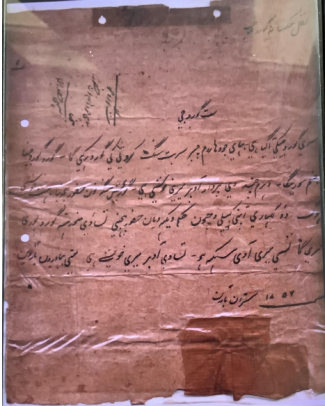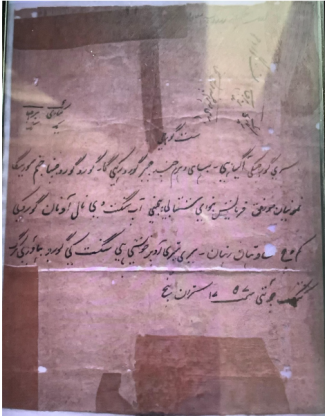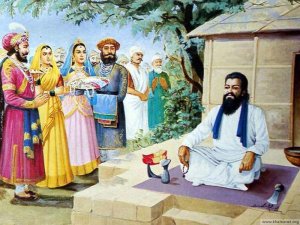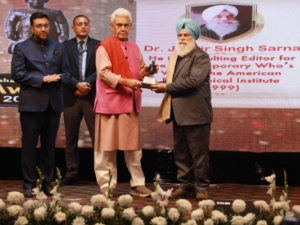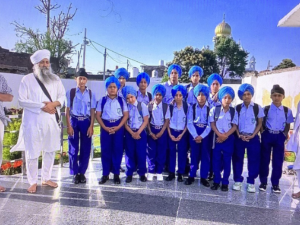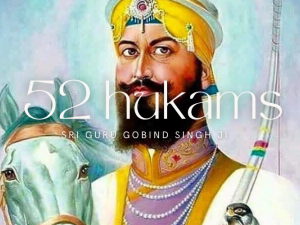Bhai Mati Dass, Bhai Sati Das, and Bhai Dayala, revered figures in Sikh history, exemplify unwavering devotion and unyielding courage during a tumultuous period marked by religious persecution.
The atrocities they faced under the reign of Emperor Aurangzeb are etched in the annals of Sikh martyrdom.
Bhai Mati Das (1619-1675), a revered figure in Sikh history, exemplified unwavering commitment to his faith during the tumultuous period of the Mughal Empire. His steadfastness in the face of temptation, torture, and ultimately martyrdom showcases the profound spiritual resilience ingrained in the Sikh tradition. In the historical narrative, Bhai Mati Das's encounter with Qazi Abdul Wahab reveals his resolute rejection of worldly enticements offered to forsake Sikhism. Even in the face of the gruesome execution proposed by Aurangzeb, Bhai Mati Das remained unyielding, emphasizing the insignificance of temporal gains compared to the path illuminated by Guru Nanak Sahib. The spiritual depth of Bhai Mati Das is further illuminated in his proposal to Guru Teg Bahadur Ji, suggesting the destruction of Delhi-Lahore brick by brick. Guru Ji's response, emphasizing humility and submission to the divine will, underscores the profound connection between the Sikhs and their spiritual guide.
As Bhai Mati Das faced imminent execution, his last moments mirrored his unshakable devotion. The account of his request to face Guru Ji during the execution and the subsequent split of his body, resonating with the recitation of Japuji Sahib, reflects a spiritual event that left a lasting impact on witnesses. Additionally, the historical context introduces the earlier Sikh martyr, Bhai Ruknuddin, Chief Qazi of Makkah, emphasizing the enduring nature of Sikhism across diverse regions and eras. Bhai Mati Das's lineage, documented in Bhat Vahi Multan Sindhi, provides insights into his familial background and the legacy of service to the Guru Ghar.Bhai Ruknuddin was the first and Bhai Mati Das was the second martyr in the Sikh tradition. In conclusion, the narrative of Bhai Mati Das transcends mere historical documentation, embodying the essence of spiritual fortitude and unwavering commitment to Sikh principles. His sacrifice echoes through Sikh history as a testament to the resilience and unyielding faith that characterizes the Sikh community. According to Genealogical table of Bhai Matidas and Bhai Sati Das:
Bawa Gautam (1477-1601 AD )
|
Bawa Dwarika Das (1572-1642)
|
Bawa Pragha (1507-1672)
|
Bawa Hira Mall (1592-1672 )
|
1.Diwan Matidas (1615-1675 ),2.DiwanSatidas (1620-1675 ), 3.Jati Das (1625-1695)
I
1.Diwan Sahib Singh > Bawa Charan Singh
2. Mukand Singh
Genealogical table of Bhai Mati Das
Bawa Gautam (1477-1601 ) > 1.Bawa Pada (1505-1637),
2.Bawa Pragadas (1507-1628),
3.Bawa Saraswati (1555-1633).
Bawa Pada>Bawa Chute Mall(Bawa Guwal Das) , Bhai Chupat, Bawa Kubula
Bawa Pragadas > Bawa Dwarika Das
Bawa Dwarika Das ( Dargah Mall Ramdas , Bawa Hira Mall)
Bawa Hira Mall ( Diwan Mati Das, Diwan Sati Das, Jati Das)
Diwan Mati Das( Diwan Sahib Singh, Mukand Singh )
Diwan Sahib Singh( Bawa Charan Singh )
Bawa Dargah Mall(Diwan Dharam Singh )
Bawa Dharam Singh (Druga Gurbaksh Singh)
Druga Gurbaksh Singh (Bhai Kesar Singh Chibber, Sant Singh Chibber)
Bhai Kesar Singh Chibber ( Sewa Singh )
Sewa Singh (Mihar Singh ,Sahai Singh)
In a gruesome episode near Chandni Chowk Delhi, Bhai Mati Das, accompanied by his brother Bhai Sati Das, faced a horrifying execution. Bolted between two planks of wood, he was bifurcated from top to trunk with a saw on November 9, 1675. Astonishingly, amidst this unimaginable torment, Bhai Mati Das remained steadfast, reciting the sacred verses of Japji Sahib. His sacrifice symbolizes an indomitable spirit in the face of brutality, reflecting the core tenets of Sikhism.
Bhai Sati Das (1620-1675), the son of Bawa Hira Nand, served as a dedicated Sewadar in the Guru's Langar and accompanied Guru Tegh Bahadur during travels in the eastern parts of India. Provoked to test his allegiance, he endured humiliation and torture directly in front of the Guru. Bhai Sati Das's resilience in the face of adversity became a testament to the Sikh principles of righteousness and unwavering commitment to the Guru's teachings.
Bhai Dayala ( ?- 1675), son of Mai Das, faced a harrowing fate. Tied with a bundle, he stood erect in a cauldron filled with water, which was heated to boiling point. Undeterred, Bhai Dayala recited Japji Sahib as he was roasted into a block of charcoal. His sacrifice echoes the profound commitment to faith and fearlessness displayed by the Sikh martyrs during this challenging period.The genealogical connection with Bhai Balu Ram, who achieved martyrdom while fighting in Guru Hargobind's first battle of faith against the Mughals, underscores the deep-rooted dedication of these noble souls to the Sikh cause.
This poignant chapter in Sikh history, documented in sources such as "Panda Wahi Pandit Govind Ram Haridwar" and "Bhatt Vahi Talawanda Jind," serves as a reminder of the profound sacrifices made by these individuals. Their unwavering commitment to Sikh principles in the face of extreme adversity remains an enduring inspiration for generations, encapsulating the essence of martyrdom in the Sikh tradition.(Source: Mahan Kosh, Guru Kian Sakhian, Rehatname, The Encyclopedia of Sikhis
(Three Hukam namas with the descendants of Bhai Sati Das.)
